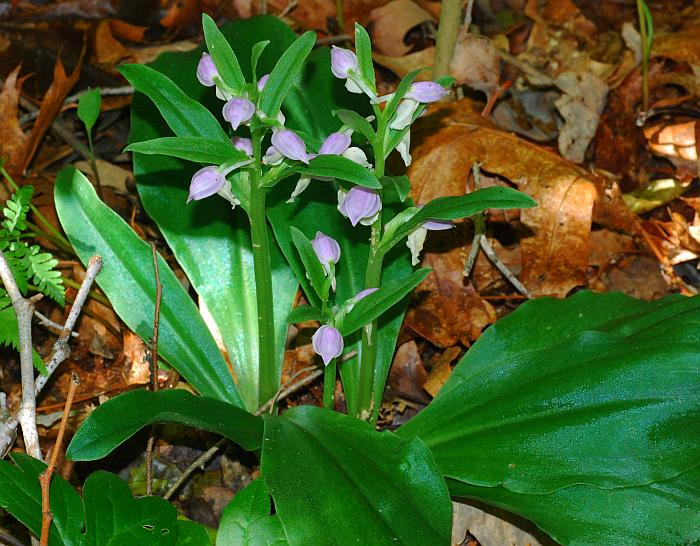Galearis spectabilis (L.) Raf.
Showy Orchis

Native
CC = 7
CW = 5
MOC = 50
© SRTurner
Galearis spectabilis (L.) Raf.Showy Orchis | |
 |
Native CC = 7 CW = 5 MOC = 50 |
© SRTurner |
|
Family - Orchidaceae Habit - Perennial forb with a cluster of thick, fleshy roots. Stems - To 20 cm tall, glabrous, simple, herbaceous, erect. Leaves - Basal, typically 2, 7-20 cm long, broadly elliptic to nearly orbicular, dark green, glossy, thick and somewhat fleshy, entire, glabrous, tapering to base, rounded at apex, sheathing at base. Leaves of flowering stem reduced to leafy bracts, lance-oblong, to 4 cm long, 2 cm broad, entire, glabrous. Inflorescence - Terminal raceme with 3-12 flowers. Each flower subtended by single leafy, sessile bract.
Flowers - Sepals 10-18 mm long, lanceolate to narrowly elliptic, pinkish purple, the lateral sepals curved upward and overlapping the upper sepal forming a hood over the column. Lateral petals 10-16 mm long, linear, pinkish purple, arching over and overlapping the sepals. Lip 13-20 mm long, ovate, white, rarely tinged with pink, the margins somewhat wavy. Spur at the base of the lip 10-20 mm long, club-shaped, oriented parallel to the ovary or nearly so. Column 6-8 mm long, white. Stamen 1, staminodes lacking. Ovary inferior.
Fruits - Erect capsules 12-20 mm long, oblong-elliptic in outline, strongly ribbed. Flowering - April - June. Habitat - Mesic or bottomland forests in rich soil of ravines and valley bottoms or on lower slopes. Origin - Native to the U.S. Lookalikes - None. Other info. - This striking little plant is reasonably common in much of Missouri but is often not seen by the casual observer because it grows in deep woods and ravines. It occurs throughout the eastern third of the continental U.S. except for the deep South. The flowers are typically white and pink but can be all white also. The flowers are resupinate, so what looks like the top of the flower is actually the bottom and vice versa. The big lip of the corolla is a perfect landing platform for flying insects. The main pollinators are bumblebees. Photographs taken in Brown Summit, NC., 4-21-03 (DETenaglia); also near Hawn State Park, Ste. Genevieve County, MO, 5-3-2010 (SRTurner). |